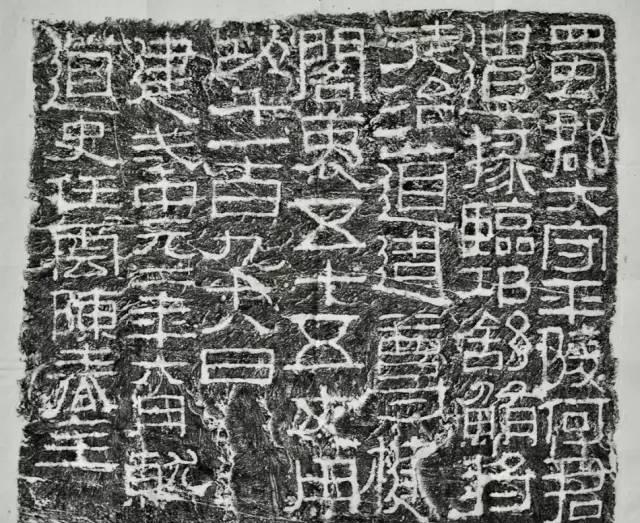Calligraphy is a line art formed through the combination of dots and lines, and it is also an art that closely combines techniques and structures with personality thoughts and spiritual interests, which can express people's qualities, temperaments, skills, etc. through works, reflecting the author's unique interests. Meaning includes meaning, interest, thought, intention and other aspects of meaning. In this way, wandering in the realm of calligraphy art composed of dots and lines can feel the author's emotions, taste the power of the work, and also arouse our infinite reverie of beauty. The art of calligraphy mainly has the following interests:
Celestial fun This refers to a natural natural fun. Calligraphy is precious and natural, Chinese calligraphy pays attention to the unity of heaven and man, and the teaching method is natural. Cai Yong of the Eastern Han Dynasty said: "Bookworm, scatter also." If you want a book, first scatter your arms, let your emotions be arbitrary, and then write it. The phrase "scattering in arms and being free to do whatever you want" here refers to this kind of "heavenly pleasure" in which heaven and man are united. Such as imitation of the child's body, at first glance it looks like a crooked and oblique, and the posture is full of childishness; In fact, the pen is strong and the inside, the crane hair is childlike, the magic is natural, and the childlike is full of fun. Such as the Moya stone door inscription, crane fist inscription stone, Qing Dynasty Zheng Banqiao characters, etc., all all convey this natural interest.

Humble fun This refers to the brushwork, posture of ripening and growing, humble and simple, high antique elegance, big coincidence, this is the unique ancient clumsy beauty in calligraphy, or humble fun. This kind of clumsiness is mostly found in oracle bones, gold texts, li, and chapter grass, and there are also ancient clumsy people in calligraphy, cursive writing, seal writing, and xingshu. In his later years, Yan Zhenqing's masterpiece "Yan's Family Temple Stele" has a wide body and a wide and wide shore, the outer secret is sparse, and the pen is rich and vigorous, and the ingenuity is clumsy, giving people a sense of kuanbo ancient clumsiness. Wang Pet was a famous calligrapher in the Ming Dynasty, who was good at various fonts such as kai, xing and cao. His calligraphy style is mainly "humble" and "quaint", and his personalized style of calligraphy has created a precedent for the style of ming dynasty calligraphy, especially for the transformation of the style of late Ming dynasty calligraphy. Other calligraphy, such as Zhong Xuan's calligraphy, Lu Jiping's post, and Kang Youwei's calligraphy, are all clumsy.
Kitsch is the opposite of playfulness. It advocates round and beautiful, handsome and colorful, giving people a feminine beauty, or beautiful, delicate. Wang Xianzhi's calligraphy is beautiful and flowing with a pen, and it is beautiful and beautiful. The Biography of Wang Xian of the Book of Jin, Yun, "the bone strength of the dedication is far less than that of the father and is quite charming"; Yang Xinyiyun of the Southern Dynasty and Song Dynasty: The dedication is "not as good as the father and the charm is too much". After Wang Xianzhi, the fetish in calligraphy was further developed, and the Yuan Dynasty was more prominent. This is because at that time, "the ancient quality is now Beautiful, and the number is often also; Love and thin, human affection also. "It should be noted here that the charm in calligraphy is not powdered, fresh and handsome is beautiful, and it is necessary to avoid soft and boneless knots, flowing and kitsch.
Elegant and elegant, this refers to elegant and elegant, ethereal and idle. The calligraphy of the former Jin Dynasty Wei Shuo (Lady Wei) is "Wanran Fangshu, Mu Ruo Qingfeng", which contains this elegant interest. In his early years, Wang Xizhi learned the calligraphy of the Zhong Shuo school from Wei Shuo, and later he also learned the Law of the People, and became a family of his own, writing strange and correct, majestic and elegant, healthy and beautiful, and exerted his elegance to the extreme. In the Ming Dynasty, Dong Qichang's works were leisurely with their pen strokes, slightly oblique in shape, fat and thin strokes, sparse structure, and clear handwriting, and the "Filial Piety Classic" he wrote was a classic of elegant calligraphy.
The graphics and text originate from the Network, if there is infringement, please contact to delete!